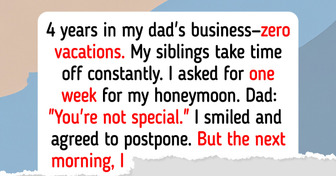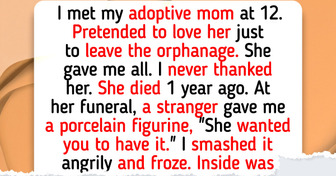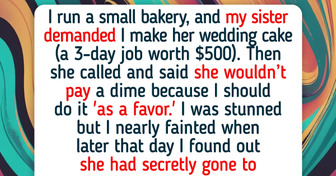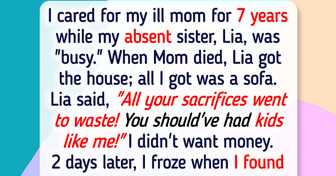10+ Powerful Stories That Could Even Make a Rock Erupt With Emotion

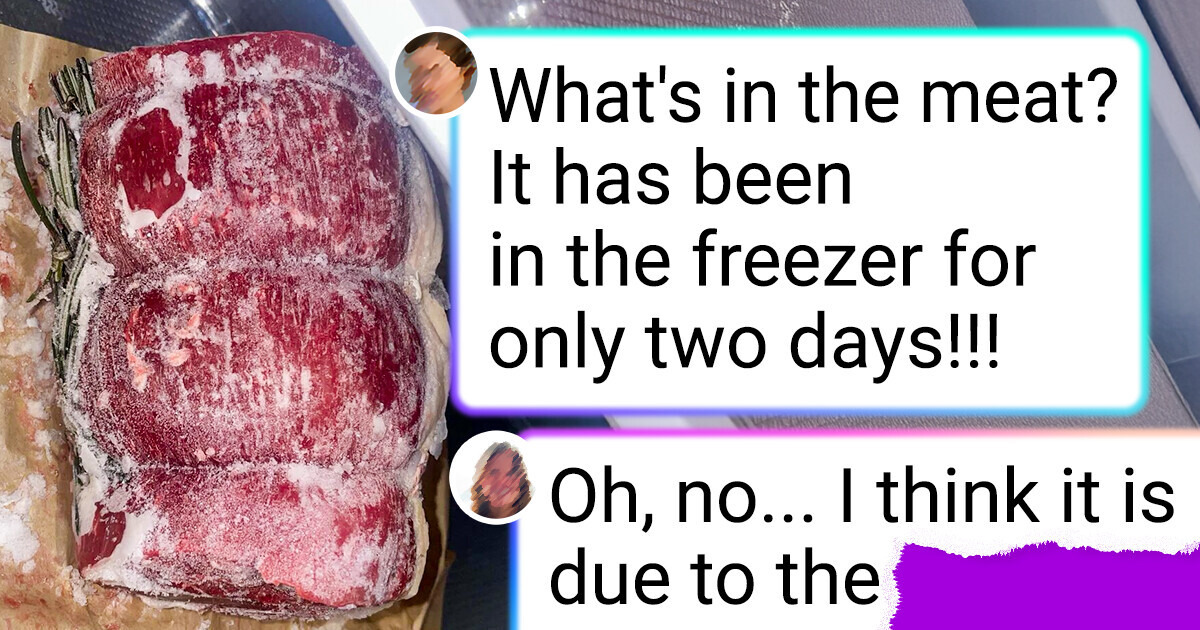
Many of us have opened the fridge and found lettuce that looked like a science experiment, or yogurt that developed its own ecosystem. From putting everything in the fridge without thinking to letting biscuits turn into cardboard, we’ll tell you the most common mistakes that are costing you money and how to fix them.
“White strawberries” © Hagiss82 / Reddit
If you’ve ever discarded a package of noodles just because it’s past its “best before date,” it’s time to dispel a myth that’s costing you money. Not all dates on packaging mean the same thing, and confusing them can cause you to throw away perfectly good food.
The “use by” date is clear: the product must be consumed before that day because it can pose a health risk afterwards. But the best-before date is another story. It does not indicate that the food will “expire,” but rather how long it will maintain its best quality. After that time, it may lose a little flavor or texture, but it is still safe to eat.
In fact, many products can still be sold and consumed without problems after that date. So before you throw something away just because the label says so, check it out. You’re one sniff away from saving food...and money.
We know that the refrigerator seems to be the best place to store any food, but this is not always the case. In fact, putting certain products in there can ruin their flavor, texture and even their nutrients.
One of the most common mistakes is to refrigerate bananas, potatoes, onions and garlic when, in fact, they would be much better off outside. Cold disrupts the ripening process of bananas, turning their skins black and affecting their aroma, texture and nutritional value. In the case of potatoes, onions and garlic, for example, the low temperature converts their starches into sugar, making them soft and wet before their time.
To better preserve bananas, the ideal is to wrap their stems with plastic film and keep them at room temperature. As for potatoes, onions and garlic, it is best to store them in a dry, cool and dark place, preferably in an open bag or container to allow air circulation. Humidity is your worst enemy. So the next time you’re going to put these foods in the fridge, think twice. Store them well and not only will they last longer, but you’ll also avoid wasting food.
Here’s a tip you can thank yourself for later! Don’t underestimate the power of a good container to preserve your food. If you want your food to stay fresh and delicious, it’s best to store it in airtight glass. They are resistant, microwave and dishwasher safe, and most importantly, BPA free! Unlike plastics, glass preserves the quality of the food better and does not release hazardous substances.
Now, what about those plastic take-out containers? We have them all sitting in the kitchen, collecting dust like a trophy. They’re great for carrying food to work or storing leftovers from dinner, but they’re not built to last. The same goes for yogurt pots and other plastic containers we buy food in. While they may seem convenient, they are not the safest or best option for preserving your food.
And if you’ve ever left a dish uncovered in the fridge, don’t worry, we’ve all made that mistake! It may seem harmless, but in reality, it’s one of the worst ideas. Food exposed to air not only loses flavor and quality, but also runs the risk of becoming contaminated. The most important thing is to keep food in closed containers. In addition to protecting them from contamination, closed containers make food last longer.
So, next time you’re in the kitchen, take an extra minute and store your food in a good container. If you’re in a hurry, at least cover those dishes with plastic wrap or aluminum foil. But it’s best to transfer them to a proper container — your food, your fridge and your wallet will thank you!
Attention, breakfast lovers! If you’re one of those who keep eggs in the refrigerator door, it’s time to change that habit. Although it may seem convenient to keep them there within reach, you are actually putting them in a risk zone for your health. The reason is simple: eggs need to be kept at a constant temperature to maintain freshness and avoid problems. But every time you open the refrigerator door, the temperature inside that compartment decreases, and that’s a feast for bacteria!
What happens when eggs get hot? You enter the dreaded “danger zone” (that range between 40 and 140 degrees), where bacteria like Salmonella multiply at an alarming rate. So, instead of leaving your eggs by the door, keep them in the coldest place in the fridge — the bottom back shelf! There they will be safe, fresh and ready for your omelet, with no risk of spoiling — do your fridge and your stomach a favor!
If you’ve ever opened your bowl and found overripe or underripe fruit, there’s a reason behind it: ethylene. This natural gas, which some fruits release as they ripen, can accelerate the ripening process of nearby fruits. And yes, believe it or not, your bananas, apples and avocados can be the culprits that make other fruits go bad faster!
To keep your fruits from turning into an early-ripening jumble, the key is to separate the fruits that produce ethylene from those that are more sensitive to it. For example, if you have strawberries and bananas in the same drawer, the strawberries probably won’t last as long as you’d hoped. On the other hand, if you separate them and store the bananas away from the strawberries, you will notice that your berries will stay fresh longer.
Citrus fruits such as oranges also prefer to be away from ethylene producers. Although they are not as sensitive as red fruits, it’s best not to risk it. And did you know that leafy greens, such as lettuce and spinach, can also spoil faster if they are near fruits like apples or pears? It’s true: ethylene accelerates the wilting of these leaves and makes them less crisp.
The trick to a longer lasting fruit bowl is simple: create zones for each type of fruit. Keep your bananas, apples and avocados in a separate area from your berries, citrus and leafy greens — this small change will make your fruit last much longer and keep your fruit bowl looking fresh and lively!
We know that washing your fruits and vegetables is a must, right? After all, you never know what kind of dirt, bacteria or impurities might be hiding in those lettuce leaves or on the skin of your fruits and vegetables — it’s crucial to keep them clean before you eat them! But here comes the twist: maybe the timing of when you wash them is the real problem.
If you’re one of those who washes everything before storing it in the fridge, you’re unfortunately reducing its shelf life. It turns out that the excess moisture added during washing can accelerate the spoilage process. And that’s not all! If you also store your washed produce in an airtight container, mold can appear much faster than you think.
So what’s the solution? It’s best to wait to wash your fruits and vegetables until just before eating or cooking them. By letting the extra moisture not come in contact with them ahead of time, their freshness and durability is much better preserved. So next time you’re organizing your fridge, remember: water can be your ally, but only when necessary!
Seems like a logical solution, doesn’t it? Keeping bread in the refrigerator to keep it fresh longer and prevent mold from ruining it. However, this is, in fact, one of the worst ideas. Why?
Well, it turns out that keeping bread in the refrigerator causes it to dry out six times faster than if you leave it at room temperature. This happens due to a process called retrogradation, where the starches in the bread crystallize, causing it to lose moisture and go stale much faster.
So what can you do to keep bread fresh longer? It’s best to store it in the pantry or on the counter, where it can breathe and stay in its best shape. But if you really need to extend its shelf life, instead of putting it in the fridge, it’s best to freeze it. Freezing bread prevents retrogradation, so you can enjoy your bread perfectly fresh even months after freezing it — a much tastier and more efficient way to keep it delicious!
“I labeled the Ziploc bag with what was in it and the date I put it there.” © MyCatHasCats / Reddit
A common mistake is not applying the FIFO system, which means “first in, first out”. This system consists of labeling food with the date you store it and placing the oldest food at the front or top, to be used first. If you don’t follow this system, you could be wasting food that is still in good condition, which is not only a bad habit, but also an unnecessary expense. FIFO allows you to use food faster, ensuring that you consume it while it is still fresh and at its best quality.
The FIFO system is especially useful if you have several similar products. If you don’t apply it, you run the risk of consuming food that has already lost its quality and freshness, and worse, you could be storing products without taking into account the expiration date. Remember that food safety is key: if you have doubts about the freshness of a product, it is best to discard it. This will protect your health and that of your family.
A common idea about freezing food is to think that once something goes into the freezer, it will remain perfectly edible indefinitely. The reality is that, after about six months, foods can start to develop freezer burn, affecting their flavor, texture and quality. That’s why it’s crucial to make a little effort and date your food when you put it in the freezer. You don’t need a fancy label for this: a simple piece of tape and a marker are enough to write the day you stored them.
By labeling your food, you can keep track of how long a soup has been in the freezer and make sure to thaw and consume it before it reaches six months. This way, not only will you be sure to eat what you have stored, but you’ll avoid waste and keep your freezer organized.
“My tin of baked beans exploded in my cupboard.” @hobowithm*** / Reddit
Although canned foods have an extended shelf life, high temperatures can cause them to spoil faster. If you store them in temperatures above 100 degrees Fahrenheit, such as in direct sunlight or in spaces warmer than 75 degrees, they will not only lose flavor, color and nutrients, but may also become unsafe to eat.
An important rule of thumb is to buy only what you can actually consume. While canned foods can be eaten for up to three years after the date printed on the package, it is best to use them within the first year. When buying new cans, be sure to rotate them and use the oldest cans first. This small habit will help you keep your pantry organized, get the most out of your produce and avoid waste.
Now that you know what mistakes to avoid, you can say goodbye to the habit of throwing away bad food, and save a few bucks. You don’t need to be an expert, just apply a few simple tricks and prevent your fridge from becoming a graveyard of leftovers. To learn more about how to make the most of what you have at home, don’t hesitate to continue exploring practical tips: kitchen organization is also key to enjoy cooking more!


